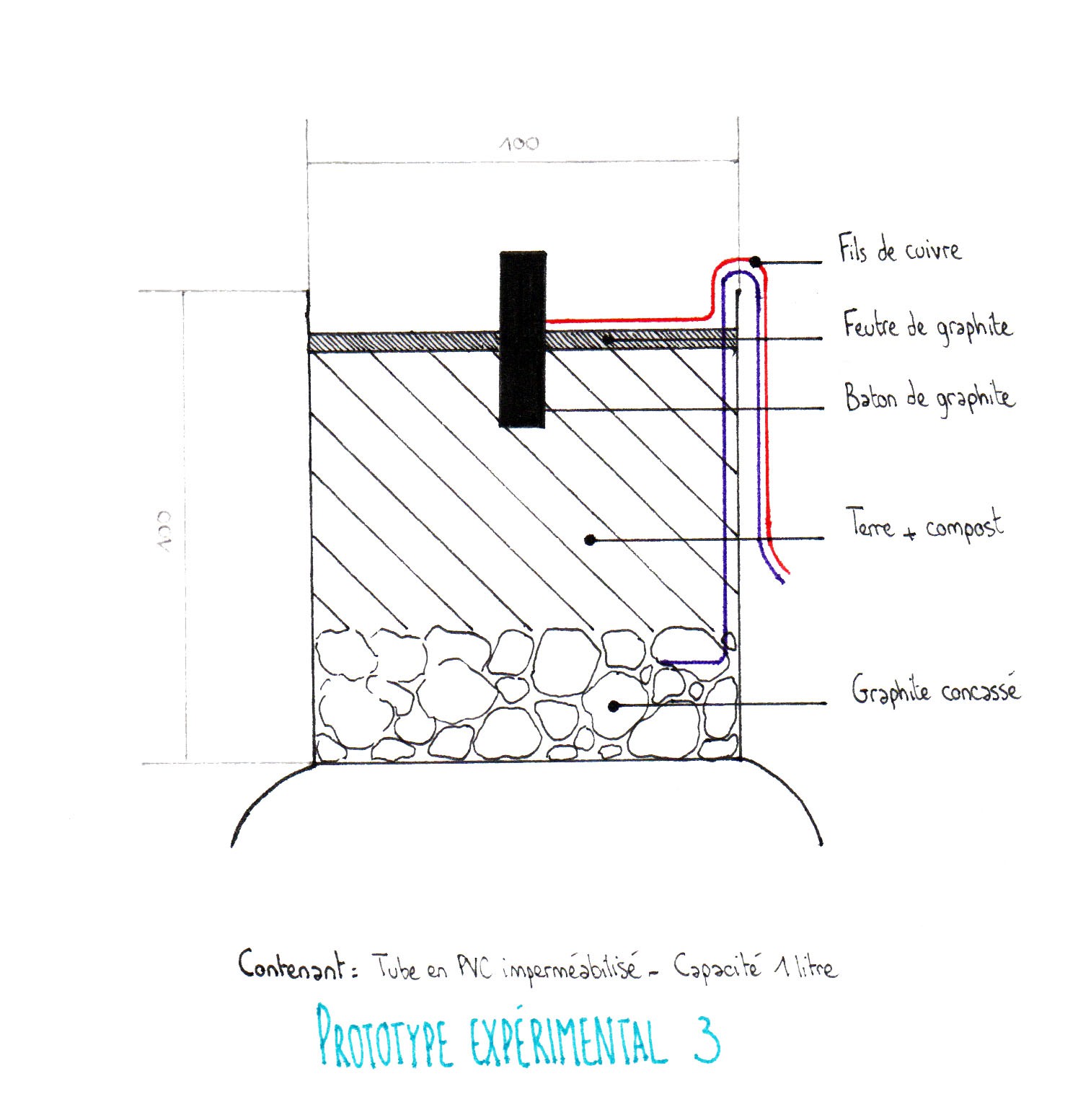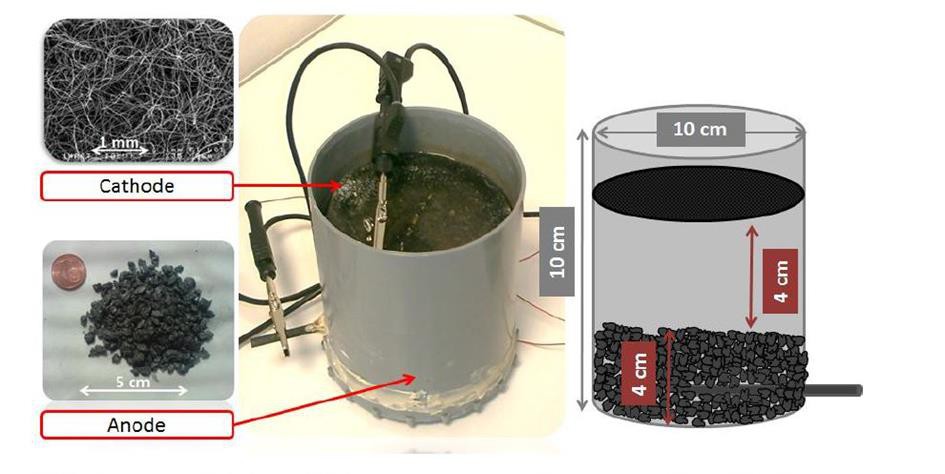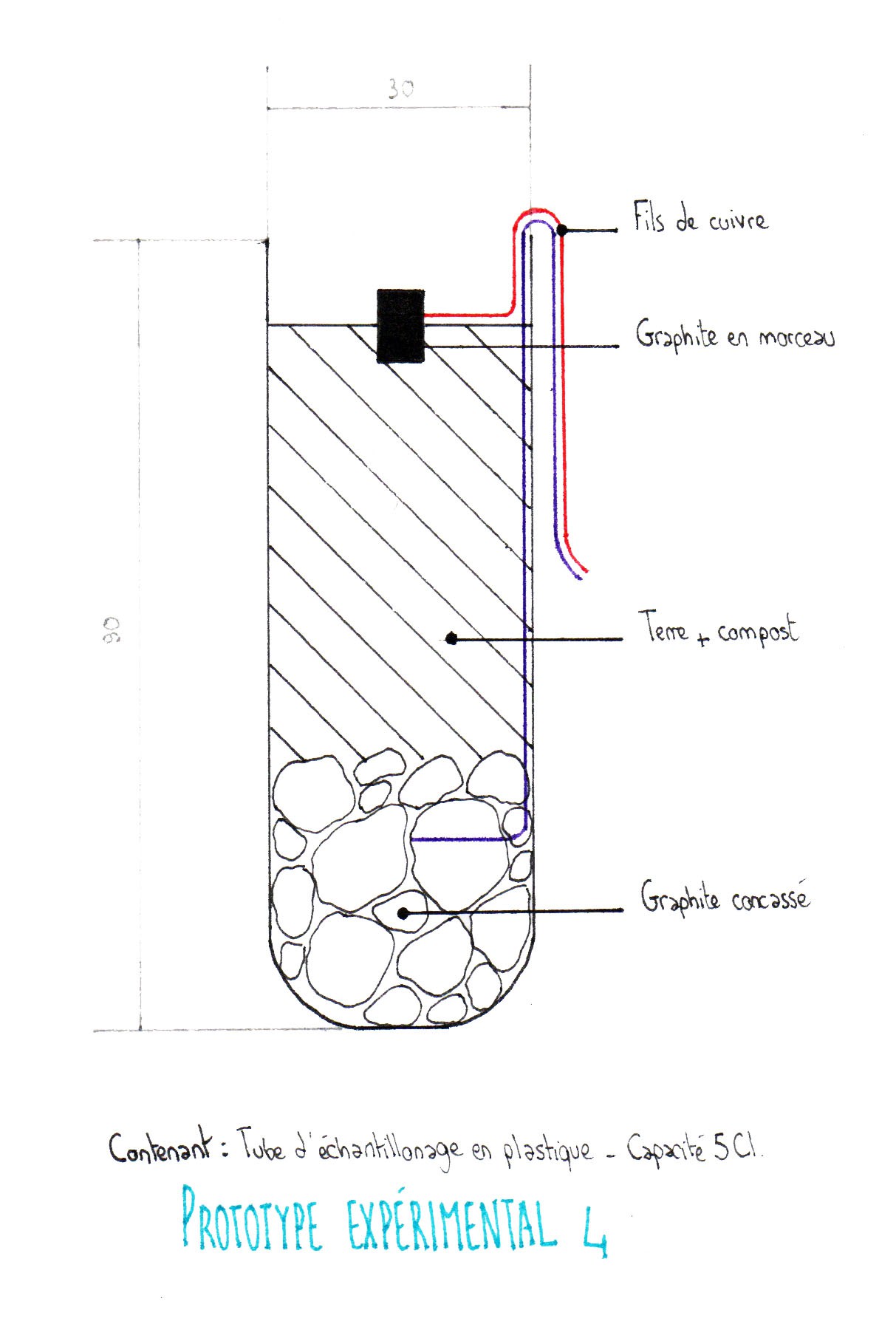3rd Prototype:

This prototype is a reproduction of the fuel cell described in the article “A single sediment-Microbial Fuel Cell powering a wireless telecommunication system” (see attached files). This way, we will be able to compare our results with the one obtain in a laboratory, and then have a reference to compare our different test between themselves.
Here is a picture of the original experiment, extracted from the article:

Container: 10 cm diameter PVC tube, 10 cm high. We closed the tube at the lower end by pasting a plastic cup and sealing it with pipe dope.
Anode: we didn’t find any graphite granules, so we mashed some graphite plate to obtain a similar material. But probably, the surface of the electrode in contact with the soil is smaller in our fuel cell than it is in the one of the article. The layer of mashed graphite is about 40 mm thick.
Cathode: graphite felt, 5 mm, diam 10 cm. 40 mm distance from anode.
Soil: mix of compost, vermicompost, and earth.
Connection of the electrode to the wire was made like we did before for proto 1 and 2, except that we used wax resin for isolation (we didn’t have any more thermo glue).
4th prototype: mini tube

For the 4th prototype, we used a small test tube as container. The idea is to use this tube as a reference and then make a batch of 5-10 test tube to test different design. For example, we could compare different anodes, cathode, soil… We could also make several similar MFC, verify that we get the same results and then put them in serie or parallel.
Container: test tube, 30 mm diam, 90 mm high, spherical bottom
Anode: mashed graphite, same as proto 3, 40mm
Cathode: graphite felt, 5 mm thick, 20 x 20 mm.
Connection of the wire was made with same technique as before, using wax as isolation.
Soil: mix of compost, vermicompost, and earth.
Measures:
We measure around 100mV across a 1Kohm resistor for MFC 3, and 20-30 mV for MFC 4. Considering the size of the MFC, this look pretty normal.
For long term measure, we keep all the MFC plugged to a 1Kohm resistor, and we will measure the voltage this resistor. This way, we don’t need to open the circuit and are able to take measures without disturbing the system.
We will try to measure the voltage produced by the MFC regularly
Discussions
Become a Hackaday.io Member
Create an account to leave a comment. Already have an account? Log In.